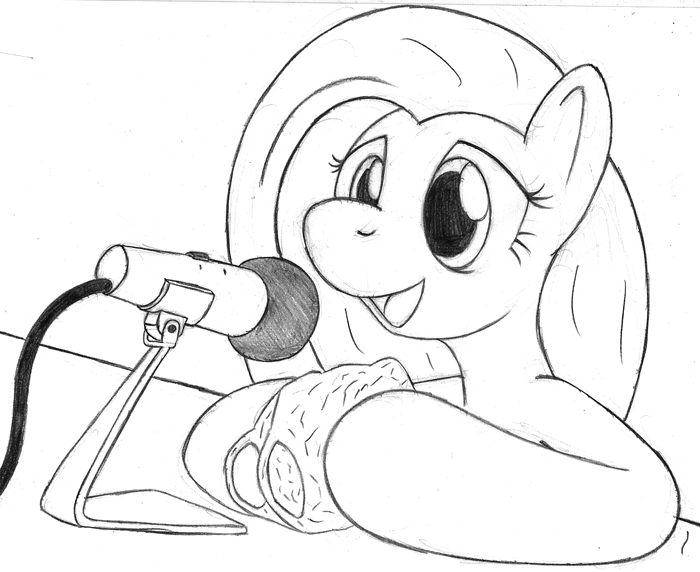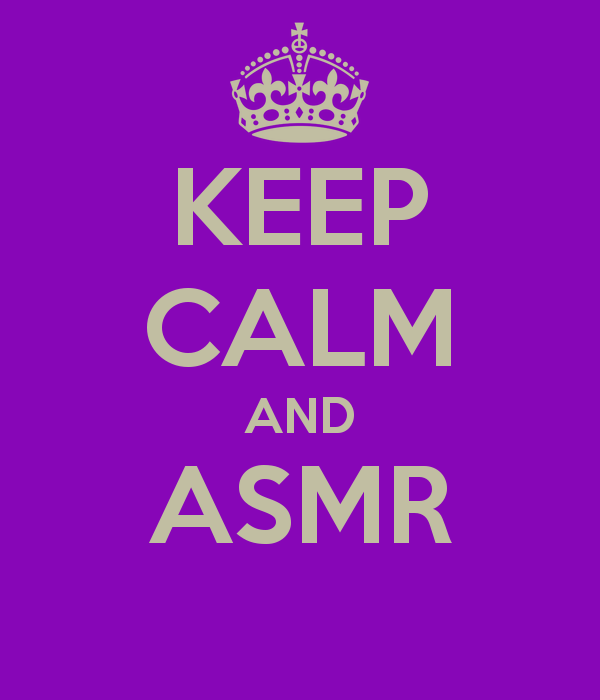If you’d told me in 2013 that Reddit and YouTube would soon become my sites of choice when passing out in front of a lava-hot monitor at night, I wouldn’t have believed you. But since discovering the scientifically controversial but definitely awesome phenomenon known as ASMR, my life (and my browser history) has changed drastically. So why don’t more people know what I’m talking about? And why isn’t there some rigorous research available I can reference to help me sound like less of a crazy person? Some background, if you will:
ASMR stands for “Autonomous Sensory Meridian Response,” but there are almost as many alternate names for the phenomenon as there are YouTube channels devoted to it—in the community’s early days circa 2009, ASMR was sometimes referred to as “Attention Induced Head Orgasm” or “Attention Induced Observant Euphoria;” more recently the sensation has been called a “brain orgasm,” “tingles,” or as Reddit puts it, simply “sounds that feel good.” Essentially, ASMR is a pleasurable experience some people report upon being exposed to specific stimuli—common “triggers” include lotion on skin, paper rustling, fingernails tapping, and whispering. Many members of the community watch ASMR videos to fall asleep, but the sensation can be so much more than just a way to chill out—tingles are a profoundly personal (and debatably involuntary) way one’s body has of expressing itself. As one Twitter user reminded me when I asked for new YouTube channel recommendations, “ASMR is about the individual viewer in a way most media isn’t.”
Since ASMR is such a personal and auditory medium, I’ll let this introductory trigger video from ASMR tingle titan Olivia’s Kissper give you a little bit of insight into what the community offers:
If that doesn’t do anything for you, you’re not alone. Not everyone experiences ASMR, and many members report that the sensation can diminish or grow over time. Even people with ASMR describe the sensation differently; I usually just feel a slight, relaxing buzzing in the back of my head, while Ilse, an artist who runs the popular channel TheWaterWhispers, says her “entire body” becomes “very tingly.” To elicit these kinds of pleasurable reactions, ASMR videos typically contain personal attention (often in the form of a role play) and triggering sounds. Bob Ross’ show is actually a good indication of what to expect from most videos–the soft-spoken artist has become somewhat of an ASMR icon and unintentionally gave many people their first “brain orgasm.”
People like me who could fall asleep to the above video every night are still definitely in a niche, but, thanks to the Internet, niches are more mainstream than ever before. Many major publications have written about the blossoming ASMR community (as recently as this Saturday, Vice spinoff Munchies published an article on the “Disgusting yet soothing world of ASMR eating videos”), and in most of these articles, several tingle truths are held to be self-evident. General consensus seems to be that, A) the ASMR community has inspired a large number of what Vice calls “young, female, and good-looking in a nonthreatening way” ASMR “Artists” (or “ASMRtists”) to create and occasionally make a small amount of money off YouTube videos like the one above, B) the phenomenon is sensual but not sexual, and C) in spite of its official-sounding acronym, ASMR thus far has not been studied in the scientific community.
But the ASMR community, much like the undefinable physical sensation itself, isn’t that easy to pin down. There are a significant number of male Artists doling out tingles on on YouTube now (In 2012, Maria of the wildly popular YouTube channel Gentle Whispering explained the gender gap by saying “If a guy is in front of the camera and whispering […] there aren’t many things he can do that won’t seem creepy”), and although a NSFW ASMR subreddit doesn’t seem to have caught on, trolls are intent on sexualizing the sensation nonetheless—in 2012, Artist CuteBunny992 left YouTube after hackers posted inappropriate videos on her channel. Thirdly, ASMR has been studied—just not as formally as many members of the community would like.

I believe this is Fluttershy from My Little Pony recording ASMR. The Internet is a vast and wondrous place.
If you’re a tingle-head who’s glad to have a legitimate-sounding acronym to validate your strange Internet habits (If you’ve watched a haircut roleplay as many times as I have, it’s nice to have an official-ish excuse in the chamber), then you have Jennifer Allen to thank. The healthcare worker coined the acronym in the community’s early days, later telling Vice that “Autonomous” refers to the “individualistic nature of the triggers, and the capacity in many to facilitate or completely create the sensation at will,” while “Meridian” is simply a less-loaded word for “orgasm.” Allen also founded the ASMR Research Institute, an organization of volunteers dedicated to studying the neurology and psychology behind the phenomenon.
Allen and the her fellow researchers are definitely ASMR pioneers, but they’re not alone in wanting greater understanding of the sensation—the Institute was preceded by a 2008 Yahoo! group called the Society of Sensationalists who formed under the manifesto: “All we have right now are questions and we need answers. We need help, not in the sense that we want to solve or cure this sensation but rather instead to learn what causes this.”
Karissa Ann Burgess, who heads experimental research and data for the Institute, told TIME last November that although the team hadn’t made significant discoveries yet, they were working with theories:
Dopamine could be involved, serotonin–the feel-good hormones […] There’s also some interesting theories that it might be a sort of bonding phenomenon and triggers the release of oxytocin, which is the bonding hormone.
I reached out to the Institute for information on more recent developments, but unfortunately their contact information seems to be outdated–hopefully not a sign that research itself has slowed down. In the meantime, prominent individuals in the scientific community have continued to ponder the phenomenon in spite of debate over whether or not ASMR even “exists.” (Among other instances of skepticism, a Wikipedia article on the phenomenon was voted for deletion due to insubstantial medical research. It’s since been restored.) Steven Novella, a neuroscientist and assistant professor at the Yale University School of Medicine, wrote about ASMR on his blog The Ness, speculating
Perhaps ASMR is a type of seizure. Seizures can sometime be pleasurable, and can be triggered by these sorts of things. Or, ASMR could just be a way of activating the pleasure response. Vertebrate brains are fundamentally hardwired for pleasure and pain – for positive and negative behavioral feedback.
Novella doesn’t think that the “Autonomous” in ASMR precludes it from rigorous scientific investigation: “It’s similar to migraine headaches—we know they exist as a syndrome primarily because many different people report the same constellation of symptoms and natural history.”
In a 2012 Independent article, Tom Stafford, Lecturer in Psychology and Cognitive Science at the University of Sheffield, also says that the individualistic nature of an experience like ASMR shouldn’t prevent the community from receiving validation and scientific context:
It might well be a real thing […] but it’s inherently difficult to research. The inner experience is the point of a lot of psychological investigation, but when you’ve got something like this that you can’t see or feel, and it doesn’t happen for everyone, it falls into a blind spot. It’s like synaesthesia—for years it was a myth, then in the 1990s people came up with a reliable way of measuring it.
Much like ASMR, anecdotal evidence existed for synaesthesia (a neurological condition thought to cause a blending of some of the senses for at least 4.4% of adults) for years before the scientific community developed a method of recognition or measurement. Dr. Nicolas Rothen conducts research on the condition that took two centuries to be recognized, and told The Guardian:
Ten to 15 years ago, researchers were mostly concerned with showing that synaesthesia was real and not just metaphorical thinking. Now it is basically accepted that synaesthetes perceive the world differently and we are asking how it relates to other cognitive function…
One thing we have found is that synaesthetes are not a different class of people – they simply have more explicit experiences[…] It’s a more extreme manifestation of what all of us experience. Asking non-synaesthetes, ‘What colour is A?’ is a baffling question, but synaesthetes have a window into perception we all share; when pressed for an answer, we all pair more common letters with brighter colours or higher pitched notes with lighter colours.
Now that an internal phenomenon like synaesthesia has received wider recognition, any possible positive impact it may have on cognitive function can be harnessed. Similarly, I wonder if acceptance of ASMR as more than just “metaphorical thinking” could lead to the sensation possibly being used for mainstream therapeutic purposes. Most ASMR channels already have an emphasis on mental wellness, with plenty of specialized (although unregulated) options for coping with anxiety and panic attacks.
The ASMR Facebook page currently boasts 18,760 members who continue to speculate even as more official groups like the Institute seem to have slowed their research slightly. In May a member on Facebook conducted what they called “an amateur job” poll to get an idea of the demographics that actively pursue an ASMR experience (it’s not specified whether the poll was conducted just on the Facebook group or via other platforms as well). The informal study showed that there are more women than men in the ASMR community, that most members are between 14-59, and the majority are “not happy with their appearance.”
Less interesting to me than the amateur poll’s actual findings is the motivation behind it—personally, my desire to understand the science of ASMR comes from a longing to capitalize on the connection it can create with others. I’m not the only one, either. For every member of the community who fears growth will saturate the ASMRket, there are people who just want to share this individualized but widely-reported experience with each other. In fact, there are even two documentaries about the phenomenon in the works. Here’s the trailer for Tingly Sensation, which was successfully crowdfunded last year:
If it weren’t for the Internet, brain orgasms and their undefinable ilk would likely have remained a sensation many of us quietly experienced but were too embarrassed to discuss—ASMR is just sensual enough to border on taboo, and besides, what if I’m the only freak who gets these? Seeing people who have just been introduced to ASMR realize “they’re not the only one” is heartwarming enough to keep me wading time and again through YouTube’s comment section (and that’s saying something).
Not only is there a solidarity in realizing that many of us have been unknowingly “orgasming” in silence alongside each other, but it’s impressive to me that someone I have never met can flip a specific switch in my brain, halfway across the world, just by posting a video with the right triggers. (I’m the Pavlov’s dog of relaxation, and that’s fine with me.) As much as ASMR is an internal experience, it’s also so universal that it feels inexplicable—how often do humans find that much common ground? When money and time can finally be devoted to more ASMR research, that won’t just mean progress in understanding tingles, but progress in understanding each other as well.
And now, in the spirit of “I thought I was the only one! You too?” here are some videos to help you explore further. Happy tingling to you, friends.
(images via Dani and ASMR on DeviantArt)
Are you following The Mary Sue on Twitter, Facebook, Tumblr, Pinterest, & Google +?










